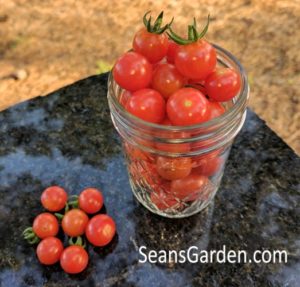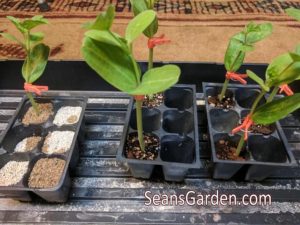The Benefits of Grafted Plants
Tomatoes
Grafted tomatoes are super tomatoes. They
- handle dry drought conditions much better
- survive excess heat better (some root stock varieties)
- do better in colder conditions
- resist most soilborne diseases and nematodes well
- make bigger and more fruit (50% or more in some cases)
- handle poor nutrient soil better (excesses or depleted)
- resist leaf diseases better (healthy plants can resist more above the graft line)
- are great for less vigorous heirloom plants, helping them grow larger and more productive

You still have to make sure that soil does not touch any part of the plant above the root plant to help keep leaf diseases under control. You also do not plant grafted plants deeply. That is, below the join where the root plant and top fruit bearing plant come together.
Grafting Benefits
You cannot plant tomatoes in the same place as you did last year. Well you could. They just do more poorly year after year. The recommended minimum time between planting tomatoes in the same location is three years. The complicated thing is that if you also grow peppers, potatoes, or eggplants, they are all in the same family. You cannot grow tomatoes or any of these similar plants in the same location for this length of time either.
If you have a small area to garden in, grow in a high tunnel or greenhouse, or just don’t want to build up a very large garden footprint to maintain, then your planting options start to get tricky.
This is were grafting comes in very useful. Not only do you get more and better fruit but you can plant in the same soil year after year. Granted you still have to watch the non-grafted plant rotations (peppers etc). I have not done it yet but you can also graft peppers and eggplants to get similar benefits.
History
In places where space is more limited than the US (Asia and Europe), they have been grafting for many years. Grafting plants in Asia goes back thousands of years. Grafting in the United States has not been as popular due to access to more land. However, the move toward organic farming is changing things. First off, the use of chemicals to fumigate the soil was very common to control disease. For environmental reasons, these chemicals are now being disallowed.
Growing organically is not easy. Especially if you live somewhere with temperature extremes or high disease pressure. Grafting can be a cornstone practice for organic success for both large farms and home gardeners.
Watermelons
For the very same reasons that you graft tomatoes, one can also graft watermelons. The added bonus is that watermelons can be up to five times crispier when grafted according to university studies. I am not sure how much extra crop yield you get, but you get the disease benefits from whichever rootstock you choose. In fact, the act of grafting itself has been shown to be better than non-grafted plants. Apparently, some sort of injury response triggers the plant to resist pests much better even if a plant is grafted to itself.

I am offering tomatoes this year from both grafted and ungrafted plants. I sell locally for now. I have started grafting watermelons to compare with non-grafted plants.
Starting Spring 2018 I plan to offer grafted plants for sale. You will be able to buy heirloom tomatoes and watermelons. I have shipped these via the US Post Office 3 day with success and may do some of that along with local sales.
Join my mailing list at SeansGarden.com (<- look left on page for sign up) to keep up with what I offer for sale as well as other garden news.